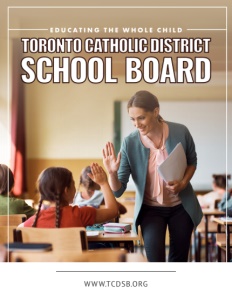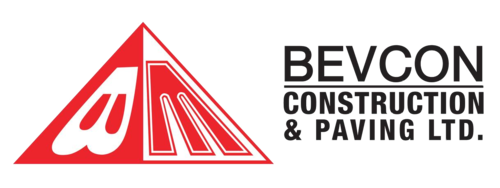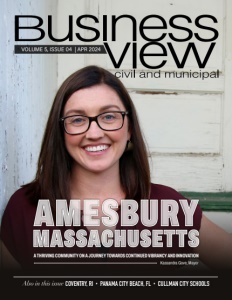The Toronto Catholic District School Board
Educating the whole child
School District expertly meets the educational needs of a growing metropolis
A glowing example of inclusiveness and educational progression, The Toronto Catholic District School Board (TCDSB) was originally established in 1953 as the Metropolitan Separate School Board (MSSB).
Today, the TCDSB serves more than 86,000 English-Catholic students in Toronto in 164 elementary schools, 29 secondary schools, two schools that combine both elementary and secondary grades, and two alternative schools. It employs 6,000 teachers, 2,800 support staff, 360 principals and vice principals, and 200 administrators, making it one of the city’s major employers with an annual budget of more than $1 billion.
Educating its students
The mission of the TCDSB is to “nurture the faith development and academic excellence” of its students “through the love of God, neighbor, and self.” Its vision encourages its learning communities to “transform the world through witness, faith, innovation, and action.” Its official symbol combines the cross, the anchor, and the heart, representing the three theological virtues of faith, hope, and charity.
“In educating students for their future success, and the contributions they can make to society, we are privileged, as a Catholic education system, to be able to educate the whole child: their bodies, their minds, their hearts, and their souls,” exclaims Nancy Crawford, Chair of the TCDSB.
“We are very supportive of student well-being and their ability to navigate their own lives and our faith, so we’re reaching out to educate students in their relationship with God and Jesus Christ. It’s a privilege that we have in our Catholic education system and we’re very grateful to be able to do this.”
A growing student population
While the TCDSB may already be the largest publicly funded Catholic education system in the world, the needs of a growing metropolitan population present an ongoing challenge for the School Board, both in terms of educational programming and physical infrastructure.
According to Crawford, “Toronto is often seen as a great location to emigrate to: a wonderful city in a great province in a great country. So, we do have an influx of new population every year and we welcome everyone. We have an orientation center where students and their families can be helped, and we have English as a second language (ESL) programs because we are very aware of the language needs of these new students. We’ve grown by almost 2,000 students from the 2022-23 year to the 2023-24 academic year. So, we do need to build new schools. Many of our schools were built in the 1960s, so they need some renewal work, or replacement in some cases.”
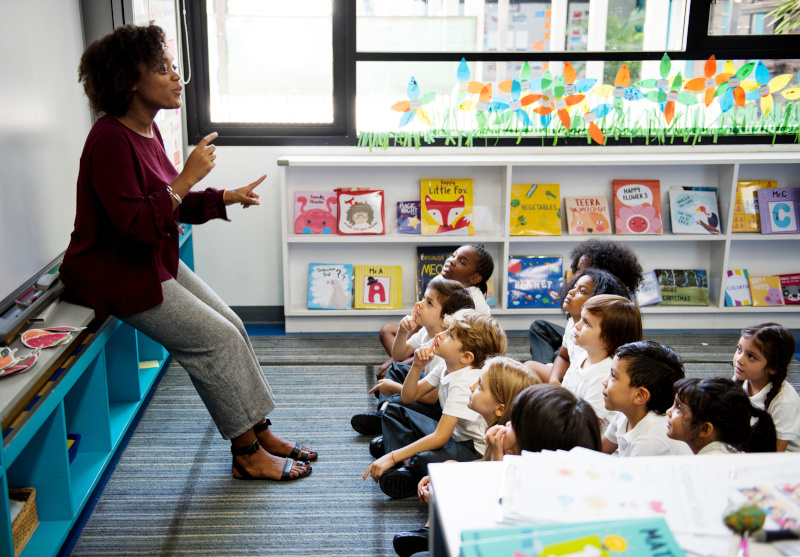
Funding capital projects
Up until 1984, the Board did not receive full funding from the government at the Secondary level. “Before full funding, the School Board had to rely on other sources to ensure students could continue their Catholic education at the secondary level,” explains Milka Zlomislic, TCDSB’s Superintendent of Capital Development.
“Prior to full funding, our secondary schools were not built to the standards of publicly-funded secondary schools. My department endeavors to contribute to the built infrastructure; we do what we can to make the spaces more inviting and better for learning and academic programming. Today, we have 26 new schools that are in various stages of development.”
One of those new schools to open in the near future is the combined St. Bruno/St. Raymond Elementary School, a $24.4 million project that will offer unique physical amenities intended to accommodate the significant number of its students who are deaf or hard of hearing.
“The architect (Kohn Shnier) did a lot of investigation into how students who are deaf and hard of hearing related to one another,” Zlomislic recounts.
“So when they designed things like ramps and stairs, they considered how students are signing to one another as they’re walking through spaces. The walls are curved to help students as they navigate around corners. They also focused the classroom spaces on the south side of the school so that the students have a spectacular view of the city of Toronto; facing south, they will see the downtown core. With windows on the south side, the school also intends to capture sunlight and heat in the winter. So, that’s a pretty exciting project based on its location, its design, and all the amenities it’s going to offer students.”
Zlomislic says that the Ministry’s funding is “very prescriptive” in terms of how funding can be spent on new schools, major additions, and renewals.
“The Ministry is very focused on improving infrastructure, including roofs, HVAC units, window restorations – all the nuts and bolts of brick-and-mortar buildings,” she notes.
“In addition to keeping roofs from leaking and heating systems in a good state of repair, we’ve been trying to find money for some of the other initiatives that are important for schools and children, recognizing that there is also the quality of the spaces and the opportunities they provide. That’s why the project at James Cardinal McGuigan is so important; because it adds a new dimension to that school.”
The new sports court
The project to which Zlomislic refers is a brand new, $550,000, high-performance, multi-sport, athletic court at James Cardinal McGuigan High School in the Downsview neighborhood of North York.
“It’s a wonderful addition to the TCDSB and the community,” says Principal Antonio Bisceglia.
“Our students can play basketball, volleyball, pickleball, cooperative games, soccer – pretty much any sport can be played on this surface. It acts as another gym and is designed for both recreational and elite players. It caters to all students. It’s an outdoor facility, which means we can use it for most of the spring, summer, and fall seasons. It’s being used by all our students, and the students in our feeder schools and elementary schools. The data shows that physical education contributes to well-being – mentally, physically, and spiritually. So, it’s really important to our school community as we continue to grow in terms of enrollment.”
“Our high school is a high-performance athletic high school, and the high-performance athletic program is for students who want to pursue a specific sport, post-secondary. They can take specialty physical education classes dedicated to their particular sport, whether it’s soccer, basketball, volleyball, etc.” Bisceglia continues.
“This new facility accommodates those students. But an even greater impact is for the recreational student who isn’t a high performing student; for the kid who wants to shoot hoops after school, or who wants to play volleyball at lunch.” In addition, the court is open to the community after school hours.
“That project made a positive impact on the school,” Zlomislic states. “It made a tremendous contribution, not just to daily academic life, but to programming that might set up kids for other opportunities in sports. We’ve already started discussions about the sports field that’s beyond the court, how to continue to build on what we’ve already done at the school, and where else we can improve sports facilities. We did a Board-wide field study and we’re using the recommendations in that study, going forward, to plan projects across the Board.”
Keeping students safe and well
Keeping students safe and healthy is always a top agenda item for a school board. The TCDSB maintains a “Safe Schools” department that liaises with many community partners.
“Our Safe Schools Department places a real emphasis on developing and nurturing partnerships with community agencies,” says Bisceglia.
“It’s about collaborating and coming together as a community and allocating resources to a cause.” A special partnership exists between the Board and the Toronto Police Service. “The police are great partners for us,” Bisceglia adds.
“The community officers run programs for our kids; in our school, they run the after-school karate program and other clubs. The police officers develop relationships with the kids and cultivating and nurturing those relationships benefits our community.”
The Board also maintains a social work department that “facilitates our students’ well-being, whether it’s mental health, physical, or even spiritual well-being,” Bisceglia relates.
“We work with the Archdiocese and the local parish, including our parish priest. They come in every month and they’re also here for religious holidays. They develop relationships with the kids. There’s a caring adult for them if they need support and guidance. We want to make sure we’re a community of caring adults so the kids have someone to turn to for whatever reason.”
Technology and the STEAM curriculum
When it comes to actual classroom instruction, the TCDSB has many STEAM (Science, Technology, Engineering, the Arts, and Mathematics)-designated schools.
“The majority of our high schools have that designation and I think that helps make them some of the best-educated students, not only in Canada, but probably the world,” Bisceglia describes.
“For this generation of students, it is a science and technology-driven world. Whether they take the college, university, or workplace path, they need to be technology-ready. And again, going back to community partners, at our school, we work with our local community colleges and our partner university, York University. We have guest lecturers coming into the high school, working with our students to learn how to program, design programs, and code.”
“These kids are getting hands-on learning as well as theory. They’re getting an elevated experience because they not only have their teachers who are experts in their fields, but they’re getting professors coming in and working with kids in grades 11 and 12, which is pretty remarkable. So, these kids are ultra-prepared for the new reality of the world.”
“We’re embracing technology and want to increase its availability to the students in a healthy, learning way,” says Crawford. “Like everyone, we’re preparing to deal with artificial intelligence (AI) and need the resources, training, and upgrading for that. Technology is very important for how the School Board operates and runs on all levels.”
“We operate with a multi-year strategic plan – the well-being plan is part of that; the pastoral plan is part of that; the academic plans; the school improvement plans; and the equity and diversity plans are all part of that. And technology makes so many of these things possible and workable in our system. It’s a huge monetary investment.”
Recently, the Ministry of Education has mandated students to take at least one technology course to graduate high school. “Its integration into the classroom and the appropriate use of technology in the classroom is a solid focus,” Crawford adds.
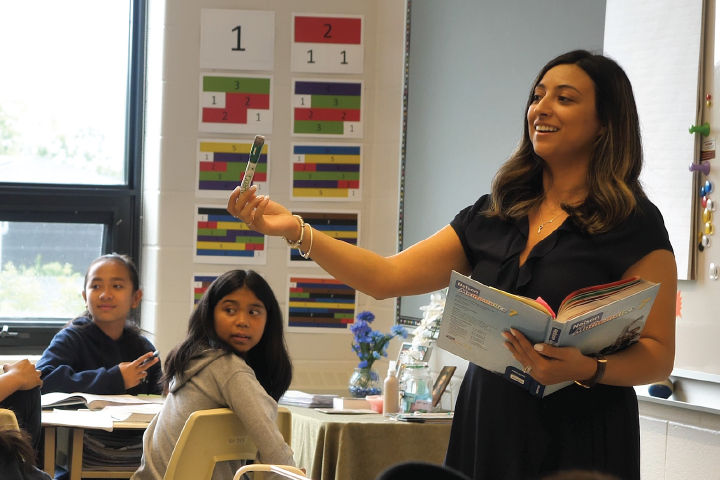
Teaching the arts
The “A” in STEAM can be represented by the Board’s two arts-focused schools: the Cardinal Carter Academy of the Arts (CCAA) in North York, and the Father John Redmond Catholic Secondary School and Regional Arts Centre, in Etobicoke, on the shores of Lake Ontario.
“The students need to apply and audition before they’re accepted,” Crawford explains. “They learn the regular curriculum but also specialize in music, singing, dance, and drama, and they offer wonderful productions every year to their communities. It is a highly sought-after program.”
At CCAA, talented young students in grades 7-12 are allowed to develop their creative and personal potential to the fullest, while being challenged to be responsible stewards of their talents. The Father John Redmond Catholic Secondary School and Regional Arts Centre offers a varied co-curricular program.
In addition to the regular academic curriculum, students take part in most athletic activities sponsored by the Toronto District Catholic Athletic Association (TDCAA); they produce music, drama, and dance productions annually; and they participate in other activities including debate, public speaking, yearbook and school newspaper production, and language clubs.
Outdoor learning
Finally, since the COVID-19 pandemic, the TCDSB has endeavored to explore more outdoor learning initiatives for all of its students by using COVID infrastructure funding that not only provided money for improvements in school ventilation systems, e.g. upgrading air handling units, buying HEPA units and filters, but also for some outdoor classrooms.
“We’ve tried, as a Board, to bring learning outdoors,” says Zlomislic.
“There have been a lot of studies regarding the benefits of bringing learning outside. I know the full-day kindergarten program does a lot of that. And we are trying to do as much of that as possible with this funding.”
AT A GLANCE
The Toronto Catholic District School Board
WHAT: And English-language, public-separate school board
WHERE: Headquarters in North York, Toronto, Ontario
WEBSITE: www.tcdsb.org
PREFERRED VENDORS
Vant Play Equipment Inc. – www.vantplayequipment.com
Vant Play Equipment Inc. is a full-service one-stop for all playground needs. From inspections to surfacing repairs to refurbishing an older structure, we either have the parts or contacts for parts to help keep your site CSA compliant. If repairs are not feasible, we also do sales and installation of new equipment.

